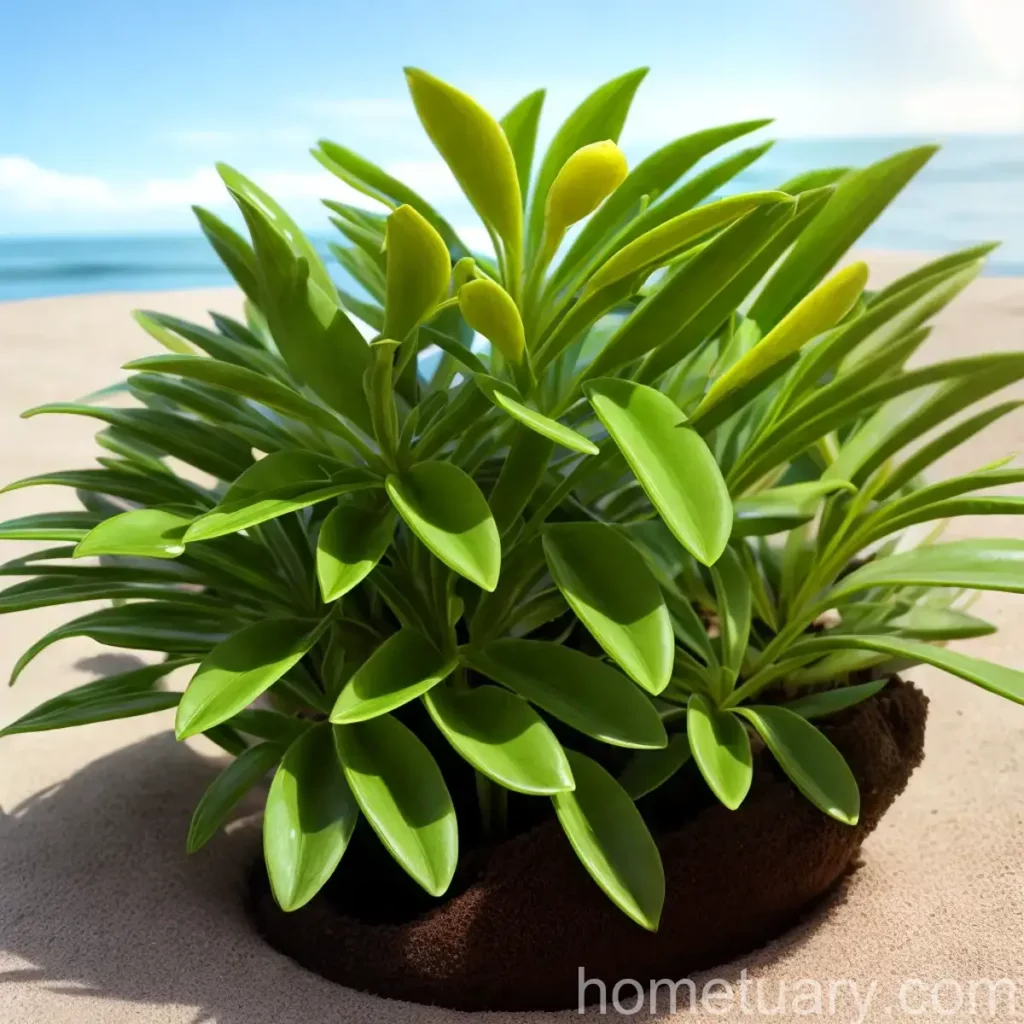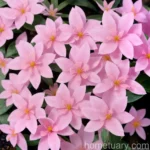Ajania (Ajania pacifica): A Comprehensive Guide to Growing and Caring for this Ornamental Plant
Plants play a crucial role in our environment and daily lives. They provide us with food, oxygen, medicine, and contribute to the aesthetic beauty of our surroundings. Among the vast array of plant species that exist, one particularly interesting and visually appealing plant is Ajania pacifica, commonly known as Ajania. This blog post aims to provide an in-depth understanding of the Ajania plant, including its culture, uses, care requirements, propagation, common diseases, pests, and interesting facts. Whether you are a seasoned gardener or a beginner enthusiast, this comprehensive guide will equip you with the essential knowledge to grow and nurture Ajania pacifica successfully.
Table of Contents
- Understanding Ajania pacifica
- Cultivation and Maintenance
- Water
- Sunlight
- Fertilizer
- Soil
- Pruning
- Propagation
- Container Gardening
- Popularity and Common Uses
- Common Diseases and Pest Control
- Botanist’s Tips and Fun Facts
- Links to External Resources
1. Understanding Ajania pacifica
Ajania pacifica is a species of ornamental plant native to the Himalayas. It belongs to the family Asteraceae and is known for its attractive foliage and cheerful, daisy-like flowers. The plant’s botanical name, Ajania pacifica, reflects its origins in the Pacific region and is often simply referred to as Ajania.
Ajania pacifica Characteristics
- Foliage: The foliage of Ajania pacifica is characterized by its silvery-gray, aromatic leaves. The leaves are deeply lobed, creating a visually striking appearance.
- Flowers: In late summer to fall, Ajania pacifica produces clusters of small, daisy-like flowers. These flowers can vary in color from yellow to creamy white, adding a pop of color to the garden.
- Growth Habit: Ajania pacifica exhibits a spreading, mounding growth habit, making it an excellent choice for ground cover or as a border plant.
- Hardiness Zones: This plant is well-suited for USDA hardiness zones 5 to 9, making it adaptable to a wide range of climates and growing conditions.
2. Cultivation and Maintenance
Water
Proper watering is essential for the health and vitality of Ajania pacifica. While this plant exhibits some drought tolerance once established, it benefits from regular watering, especially during periods of prolonged dryness. Adequate moisture contributes to robust growth and encourages abundant flowering.
- Watering Needs: During the growing season, water Ajania pacifica regularly, ensuring that the soil is consistently moist but not waterlogged. In hot climates, provide supplemental watering to prevent the soil from drying out excessively.
Ajania pacifica Planting in Containers
When growing Ajania pacifica in containers, it is important to pay close attention to watering requirements. Containers can dry out quicker than garden beds, so monitor the moisture level regularly and water as necessary to keep the soil evenly moist but well-drained.
Sunlight
Ensuring that Ajania pacifica receives the appropriate amount of sunlight is crucial for its overall health and flowering performance. This plant thrives when provided with the right balance of sunlight and shade.
- Sunlight Requirements: Plant Ajania pacifica in a location that receives partial to full sunlight. In warmer regions, some afternoon shade can help protect the plant from excessive heat and sun exposure.
Fertilizer
Proper fertilization contributes to the vigor and flowering capacity of Ajania pacifica. Applying a balanced fertilizer at the right time can support healthy growth and enhance the plant’s ornamental qualities.
- Fertilization Schedule: Feed Ajania pacifica with a balanced, all-purpose fertilizer in early spring before new growth begins. Follow the manufacturer’s instructions for proper application and dosage based on the size and age of the plant.
Soil
The soil composition and structure play a significant role in the growth and development of Ajania pacifica. Providing well-drained, nutrient-rich soil is essential for success with this plant.
- Soil Requirements: Plant Ajania pacifica in moderately fertile, well-drained soil. Amending the soil with organic matter, such as compost, can improve its texture and nutrient content, creating an optimal growing environment for the plant.
Pruning
Pruning is a beneficial practice that helps maintain the shape and health of Ajania pacifica while encouraging a compact, bushy growth habit. Regular pruning also helps to remove spent flowers and rejuvenate the plant for a fresh, vibrant appearance.
- Pruning Technique: After the flowering period, trim back the spent flower stalks and remove any dead or damaged foliage. Prune the plant lightly to promote new growth and maintain its desired shape and size.
Propagation
Ajania pacifica can be propagated through various methods, including division, seed sowing, and stem cuttings. Each propagation technique has its own specific requirements and procedures, offering flexibility in multiplying plants for your garden or landscape.
- Propagation Methods:
- Division: Divide mature Ajania pacifica plants in early spring or fall, ensuring that each division has a good root system and several shoots for successful establishment.
- Seed Sowing: Collect seeds from mature plants and sow them in a well-prepared seedbed or containers. Keep the soil consistently moist and provide adequate light to support seedling growth.
- Stem Cuttings: Take softwood or semi-ripe stem cuttings in late spring or early summer. Root the cuttings in a well-draining potting medium and provide a warm, humid environment to encourage root development.
Ajania pacifica Container Gardening
Growing Ajania pacifica in containers offers the versatility of bringing its beauty to various outdoor or indoor settings. When it comes to container gardening, selecting the right pot size, soil mix, and placement is paramount for the plant’s well-being.
- Container Selection: Choose a spacious, well-draining container that allows for adequate root development and growth. Opt for containers with drainage holes to prevent waterlogging and root rot.
- Soil Mix: Use a high-quality, well-draining potting mix when planting Ajania pacifica in containers. The soil mix should retain moisture while ensuring proper drainage to support healthy root development.
- Placement: Position the container in a location that receives partial to full sunlight, depending on the plant’s sunlight requirements. Rotate the container periodically to promote even growth and prevent the plant from leaning toward the light source.
3. Popularity and Common Uses
Ajania pacifica is highly valued for its ornamental attributes, versatility, and ease of cultivation. This plant is utilized in various landscape and garden settings, offering aesthetic appeal and functional benefits.
Landscape Uses
- Ground Cover: Ajania pacifica’s spreading growth habit and attractive foliage make it well-suited for use as ground cover. Plant it in mass plantings or along garden borders to create a visually striking and low-maintenance landscape feature.
- Border Plant: Utilize Ajania pacifica as a border plant in perennial beds or mixed borders. Its mounding form and contrasting foliage add texture and interest to the garden while complementing other ornamental plants.
- Container Planting: Incorporate Ajania pacifica in container gardens to introduce its unique foliage and flowering display to patios, balconies, and outdoor living spaces. Pair it with complementary plants for a visually appealing and dynamic container arrangement.
4. Common Diseases and Pest Control
As with any plant, Ajania pacifica is susceptible to certain diseases and pest infestations that can impact its health and appearance. Recognizing common issues and implementing effective control measures is essential for maintaining the plant’s vigor and vitality.
Disease Diagnosis
Common diseases that may affect Ajania pacifica include fungal infections, such as powdery mildew and leaf spot diseases, which can lead to leaf discoloration, spotting, and overall decline in plant health. Proper cultural practices, such as ensuring good air circulation and avoiding overhead watering, can help prevent these issues.
Common Pests
Pests that may infest Ajania pacifica include aphids, spider mites, and leaf miners, which can cause damage to the foliage and impair the plant’s overall growth and appearance. By regularly inspecting the plant for signs of pest activity and promptly addressing infestations, you can effectively manage these common pests and protect the plant from potential harm.
Ajania pacifica Pest Control
Implementing integrated pest management practices, including natural predators, organic pest control products, and physical removal of pests, can help prevent and manage pest infestations on Ajania pacifica. Additionally, maintaining plant health through proper watering, fertilization, and cultural care can boost the plant’s natural resistance to pests and reduce susceptibility to infestations.
5. Botanist’s Tips and Fun Facts
Botanist’s Tips
- When planting Ajania pacifica, consider its mature size and spacing requirements to allow for proper growth and development without overcrowding.
- Incorporate Ajania pacifica in mixed plantings to take advantage of its contrastive foliage and vibrant flowering display, creating visually appealing combinations in the landscape.
Fun Facts
- The silvery-gray foliage of Ajania pacifica enhances its visual appeal and provides an excellent backdrop for the cheerful, yellow or creamy-white flowers that adorn the plant in late summer to fall.
- Ajania pacifica is a valuable addition to wildlife gardens, attracting beneficial pollinators, such as bees and butterflies, with its nectar-rich flowers.
6. Links to External Resources
For further information and resources on Ajania pacifica, refer to the following links:
– The Royal Horticultural Society – Ajania pacifica
– Missouri Botanical Garden – Ajania pacifica
– University of Vermont Extension Department of Plant and Soil Science – Ajania pacifica Care
In conclusion, Ajania pacifica is a charming and versatile plant that offers a plethora of ornamental and functional benefits for gardeners and landscapers. By understanding its cultural requirements, maintenance practices, and landscape uses, you can successfully grow and enjoy the visual and ecological rewards that Ajania pacifica has to offer. Incorporating this delightful plant into your garden or landscape design can bring a touch of elegance and natural beauty to your outdoor spaces, creating a welcoming and harmonious environment for both humans and wildlife alike.















